The 19 Small Ways That NASA Will Try To Save The Earth

There are a slew of Earth Science missions that NASA has planned for the future. We need all of them (and more) for a thriving planet.
When most people think of NASA, they think about space and the Universe beyond our world. NASA conjures up images of humans in space, on the Moon, or in rockets. From a science perspective, we think about the stars, nebulae and galaxies out there in the distant Universe, and the planets in our solar system and beyond. But NASA has four main science goals: Astrophysics, Planetary Science, Heliophysics, and Earth Science. As Earth Day approaches, it’s this last one — Earth Science — that deserves to be highlighted. From space, we can view our planet and its properties in ways we simply cannot achieve from the ground. The challenges we face on our world, from the natural to the human-created ones, require us to understand what’s happening, when, and by how much. NASA, and the Earth Science research it performs, is vital to humans successfully navigating and overcoming the weather-and-climate trials facing us, now and in the future.

As far as science has come, we still do not fully understand the complex system that is planet Earth. The Earth’s atmosphere, surface, bodies of water, frozen ices, and living organisms all interact in complex ways, yet form a single connected system. As our planet changes, from both natural and human-caused factors, there’s only one hope for understanding the optimal course of action to take: to investigate these systems scientifically. Only if we have a scientific understanding of planet Earth and how all of these interconnected components respond to natural and human-induced changes, can we successfully hope to predict climate, weather, and other natural threats and hazards.
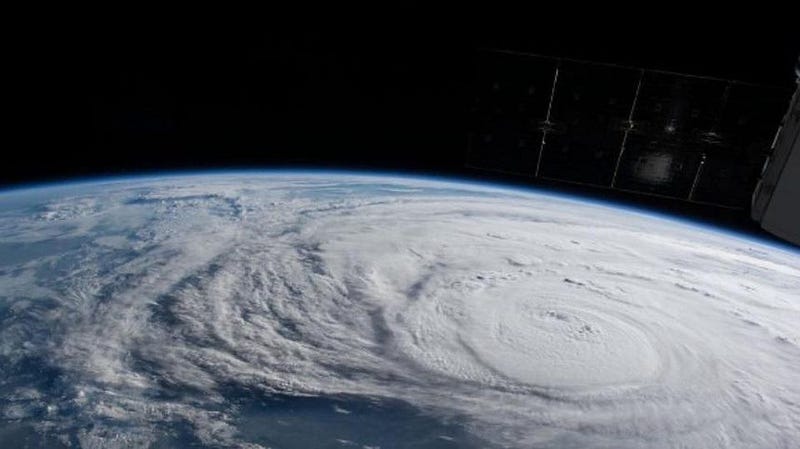
What NASA’s Earth Science Division does as perhaps its primary function is to conduct and coordinate satellite and airborne missions that observe as much of the globe as possible. This includes the land surface, the biosphere, the atmosphere, the oceans and icecaps, and more. The satellite views you see from meteorology reports, the measurements of Earth’s temperature, atmospheric concentrations of gas, views of vegetation, cloud cover, icecap and glacial growth and retreat, and so much more all depends on NASA’s Earth Science program. There are fundamental science questions about the ways the Earth is changing, and without sound science about those changes, there’s no way to make an informed policy decision.
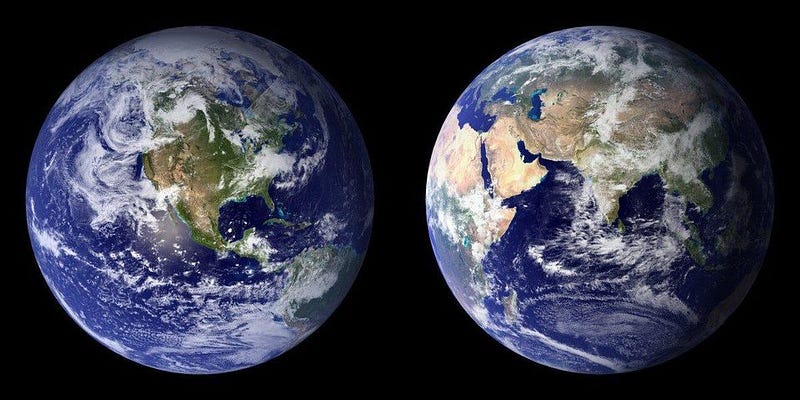
That’s why, over the coming years, it’s imperative that NASA’s Earth Science division receive full funding for the suite of the 19 upcoming missions it has planned. There is no substitute for accurate information about the system you’re studying, and in this case, the system is the planet we rely on to sustain us. Here are the missions we must make sure go ahead as planned — and don’t get defunded as part of a political game — if we ever hope to learn the relevant facts:
- ASCENDS: The Active Sensing of CO2 Emissions over Nights, Days, and Seasons. This mission will measure the amount of CO2 in the atmosphere, globally, without a bias towards seasons, latitudes, or day/night, as well as air pressure and temperature. This instrument could either fly as a standalone mission or as a component of a larger Earth observatory.
- CLARREO: The Climate Absolute Radiance and Refractivity Observatory. This long-term mission will monitor a wide variety of radiation properties of the Earth, including reflected sunlight, to better understand and quantify Earth’s climate and how it’s changing. This should produce the most accurate and trusted climate record in history, and a Pathfinder mission is slated to launch to the ISS in the 2021 timeframe.
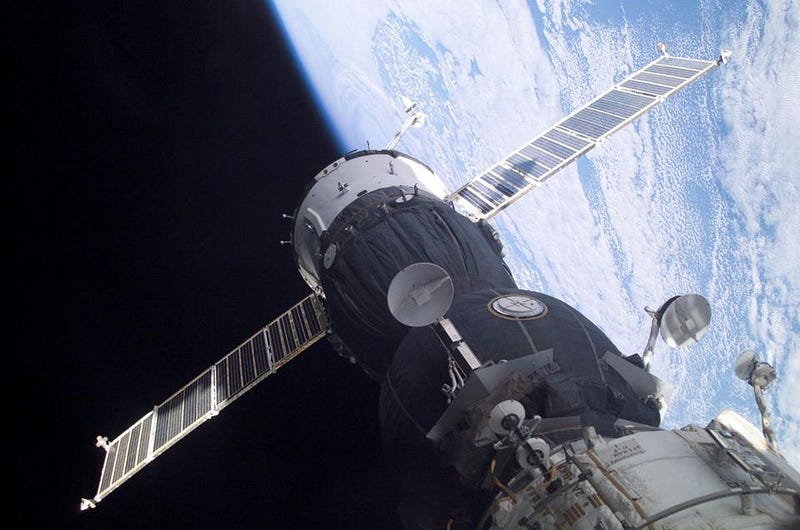
- ECOSTRESS: The ECOsystem Spaceborne Thermal Radiometer Experiment on Space Station. How much water do plants need when they’re growing under favorable conditions? What about when they’re stressed? The ECOSTRESS instrument will measure plant temperature, how much water they need, and how they respond to environmental stresses. This is needed information for agricultural/food security.
- GEDI: The Global Ecosystem Dynamics Investigation.Measuring what’s happening on the surface of the Earth from space is great, but even better is learning about the 3D structure of the surface and the biosphere, and that’s what GEDI will do. This high-resolution laser ranging system can measure precisely the height, vertical structure, and surface elevation of forest canopies, and can teach us important lessons about carbon and water cycling. GEDI will provide this missing “3D structure” piece to major challenges in forest management, water resources, weather prediction and more.
- GRACE-FO: A follow-on to the GRACE satellite scheduled for launch on May 19th, this mission will track changes in ice sheets, glaciers, lakes and rivers, sea level, and underground water storage. If we can track Earth’s water in motion, we can better understand and quanitfy the water cycle on a planet-wide scale. The results of this should benefit all the humans on planet Earth.
- ICESat-2: The Ice, Cloud, And Land Elevation Satellite-2. This satellite will pulse a laser 10,000 times per second, releasing approximately 20 trillion photons at a time. With each pulse, about a dozen photons will return to the satellite; that’s sufficient for measuring the elevation of ice sheets, glaciers, sea ice and more to a precision never-before obtained. The cryosphere, which is our planet’s frozen and icy areas, are a key focus of NASA’s Earth Science research.
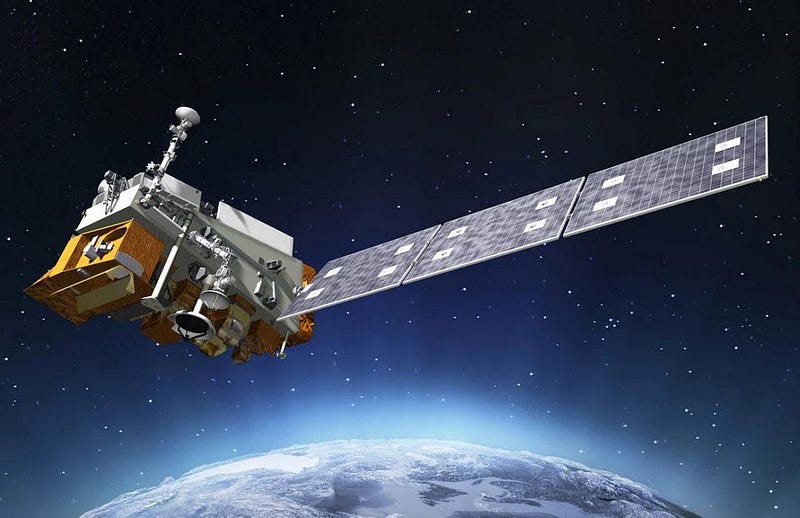
- JPSS-2: The Joint Polar Satellite System. In its clever, polar orbit, it covers the entire Earth twice a day, obtaining global coverage of weather and climate phenomena. This is most essential for disaster mitigation; we could have made far superior predictions of Hurricane Katrina, for example, had we had this satellite operating in 2005. JPSS-1, operating today, is the greatest set of meteorological tools ever available to humankind. Coverage relies on the continued development and launch of subsequent JPSS satellites, at an interval of approximately one every five years. If JPSS-2 doesn’t launch by 2023, we will lose the coverage we’ve worked so hard to gain.
- Landsat-9: High-quality, global, land-imaging satellites are one of the most vital tools we have to understand our terrestrial world. Since the early 1970s, the Landsat program has been providing those images, and Landsat 9, as part of the US Sustainable Land Imaging program, will continue Landsat’s irreplaceable record of Earth’s land surface upon its 2020 launch. Without this program, we would be unable to make adequately informed decisions about land use.
- MetOp-C, part of POES: The Polar Operational Environmental Satellites. A joint ESA/NASA collaboration, this includes the upcoming successor to MetOp-B, which includes five instruments provided by NASA/NOAA. These instruments measure reflected solar energy, radiated thermal energy, the intensity of Earth’s radiation belts, ocean surface temperatures, atmospheric ozone, cloud height and coverage, and the water vapor profile of the atmosphere, among many other tasks. This will be the third satellite in its series (after A and B), and is required to maintain the coverage we already have.
- NAAMES: The North Atlantic Aerosols and Marine Ecosystems Study. What processes control the functioning of the oceans? How do the oceans influence atmospheric aerosols, short-lived substances, clouds, and the climate overall? There will be ship, aircraft, satellite, and in situ ocean sensors all combining to help answer these questions. With NAAMES, we will be better informed about how to manage the ocean and to assess and predict changes in the ecosystem.
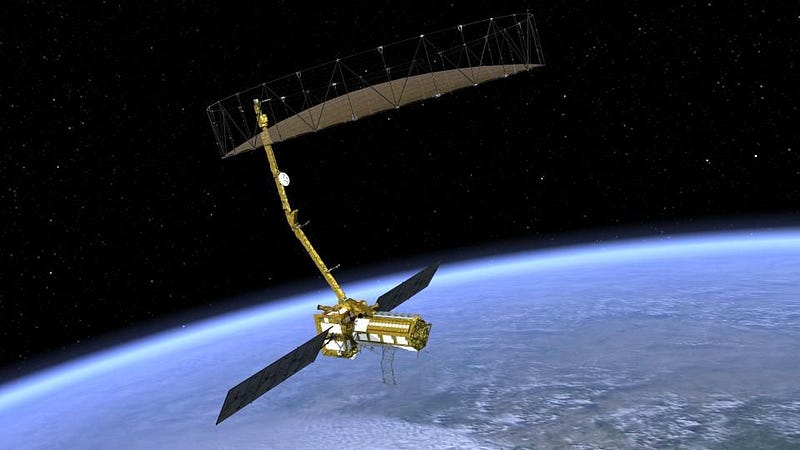
- NISAR: The NASA-ISRO SAR Mission. This joint venture between NASA and ISRO, the space agency of India, will measure surface deformations to determine the likelihood of earthquakes, volcanic eruptions, and landslide, all while monitoring groundwater, sequestered CO2, and determining the contribution of Earth’s non-human biomass to the global carbon budget.
- OCO-3: NASA’s Orbiting Carbon Observatory 3. How do you measure atmospheric carbon dioxide with the precision, resolution, and coverage necessary for seeing how CO2 levels change in time and space over the course of a year? With three high-resolution grating spectrometers that will collect space-based measurements of atmospheric CO2. This will be installed on the ISS Japanese Experiment Module-Exposed Facility (JEM-EF). It will allow us to compare space-based measurements with existing ground-based and airborne instruments. When it comes to CO2, it’s vital to get it right.
- OMG: The Oceans Melting Greenland mission. Ice sheets aren’t just melting from above, but below as well. The OMG mission will help better estimate sea level rise by measuring to what extent Greenland’s ice sheet is melting from below, as changing water temperatures on the continental shelf surrounding Greenland will be measured for the first time. It will also improve measurements of the shape and depth of the sea floor in key regions.
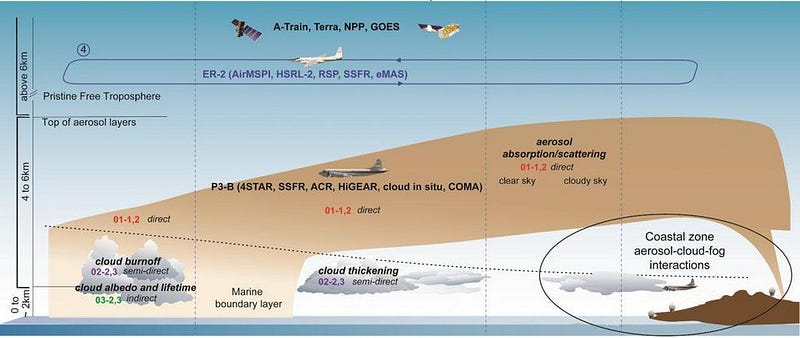
- ORACLES: The ObseRvations of Aerosols above CLouds and their intEractionS mission. It arguably has the worst acronym ever, but measures a vital component of human pollution: the effects of burning biomass, particularly over the continent of Africa. These aerosols creating from the burning of biomass will get transported and accumulate over a cloud deck in the SE Atlantic, which is a climate radiator. By NASA’s own admission, “As emphasized in the latest IPCC report, the global representation of these aerosol-cloud interaction processes in climate models is the largest uncertainty in estimates of future climate.” This is important.
- PACE: The Plankton, Aerosol, Cloud, ocean Ecosystem Satellite. The overall science goal is to better understand how the ocean and atmosphere exchange carbon dioxide, and will also reveal how aerosols might fuel the growth of phytoplankton in the top layers of the ocean. Additionally, it will identify the extent and duration of algae blooms, and will map out the various types of ocean chlorophyll produced. By extending and expanding NASA’s long-term observations, it promises a better understanding of a critical component of Earth’s biosphere and climate.
- SWOT: The Surface Water and Ocean Topography Satellite. A joint venture between the USA, France, the UK and Canada, SWOT will cover the globe to provide vital information on rivers, lakes, reservoirs, as well as the oceans. Full coverage takes about 11 days, and will mark the first comprehensive views of Earth’s freshwater from space. It will launch in 2021, and will image the oceans to ten times better resolution than our best satellites are doing today.
- TEMPO: The Tropospheric Emissions: Monitoring of Pollution instrument. Slated to be launched in 2019 aboard a geostationary communications satellite, TEMPO will measure the pollution over all of North America, hourly and at high spatial resolution. It will be the first instrument of its kind, collecting information about ozone, nitrogen dioxide, and other pollutants, all in the name of improving our air quality forecasts to levels never-before-achieved.
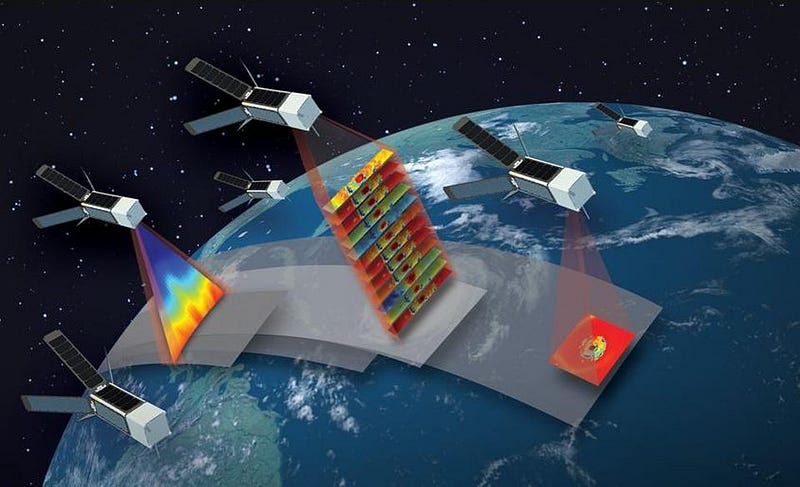
- TROPICS: The Time-Resolved Observations of Precipitation structure and storm Intensity with a Constellation of Smallsats. The tropical latitudes of Earth are where our most devastating storms form, and they require time-resolved observations to teach us how heat and water flow over the entire storm lifecycle. There will be three total constellations of CubeSats flying in low-Earth orbit, which will scan across the satellite track every two seconds, focusing on oxygen, water vapor, precipitation, and cloud ice. We expect improved resolution, configurable coverage, and reliability at a very low cost.
- TSIS-1: NASA’s Total and Spectral Solar Irradiance Sensor. Designed to measure both the total irradiance from the Sun and the spectral (in different wavelengths) solar irradiance, TSIS-1 is sorely needed to replace an old, out-of-date instrument (the TIM instrument) on board the aging, 2003 SORCE spacecraft. NASA has an unbroken 40-year-long data record of total solar irradiance, and TSIS-1 is expected to fly on the ISS later this year. A gap in the record would be a huge defeat.
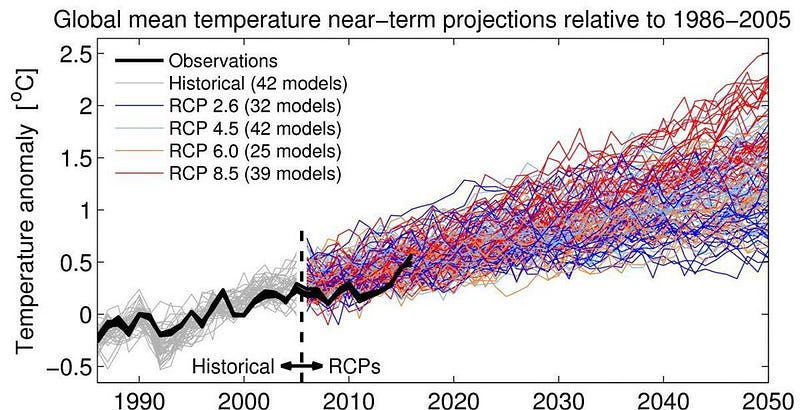
The key to adapting to a changing world, not just as individuals but as the human race, requires us to use the best tools and information at our disposal. That means paying attention to what the Earth is doing, both naturally and artificially, and using the best data available to drive our policy decisions. These 19 future missions represent the short-and-medium-term roadmap for NASA Earth Science, and every one of these missions is currently slated to go forward, as long as there aren’t unexpected cuts in the future. This Earth Day, don’t just celebrate our planet only to forget about it; keep in mind what we’re doing to learn about our world and why it’s valuable. This planet is the only Earth we’ve got, and it’s up to us to be good stewards of this world. Without quality scientific information on which to base good decisions, from a global perspective, we’d be nothing more than animals.
Ethan Siegel is the author of Beyond the Galaxy and Treknology. You can pre-order his third book, currently in development: the Encyclopaedia Cosmologica.





